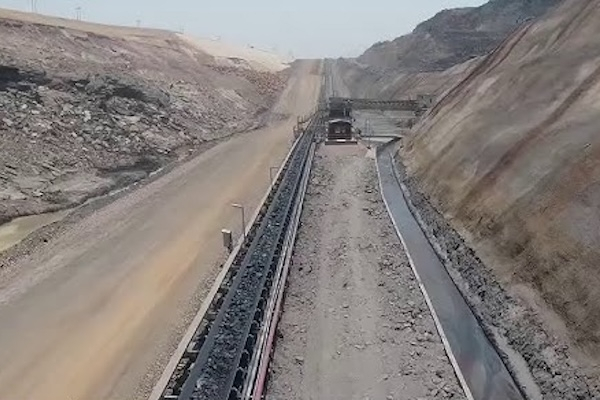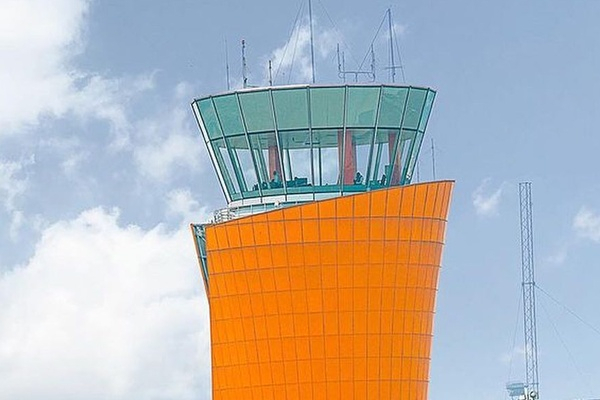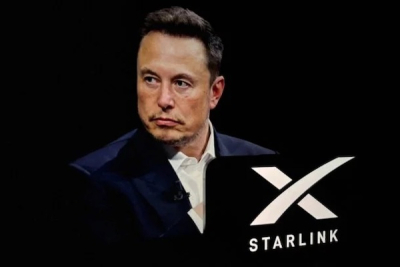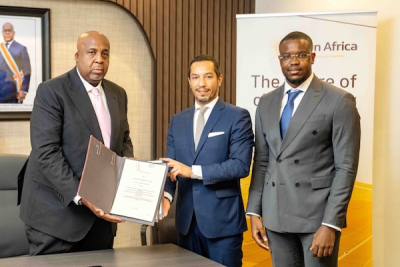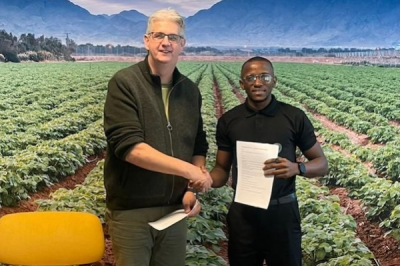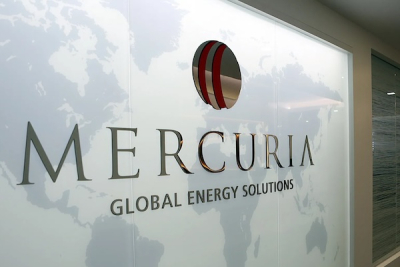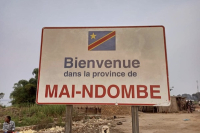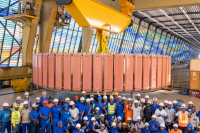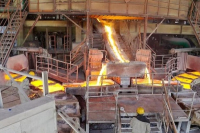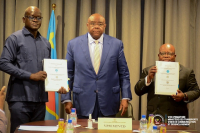
News (571)
The Congolese Agency for Major Works (ACGT) says it remains on track to complete the 3,300-kilometer Sakania-Banana road corridor by the end of 2027.
The project will fully pave National Road No. 1, linking the Democratic Republic of Congo’s eastern border to its Atlantic coast. According to ACGT Director General Nico Nzau Nzau, 850 kilometers still need to be paved.
Nzau Nzau told state-owned Radio Okapi on November 4 that the route is already laid out and passable, but the remaining 850-kilometer stretch between Mbuji-Mayi and Nguba requires final paving, which is now underway.
He said current works focus on clearing and opening the roadbed to allow traffic between Mbuji-Mayi and Nguba. Asphalt laying has begun on the Mbuji-Mayi-Mediito and Nguba-Lobudi segments. About 20% of the overall work was completed during the first year, a phase largely dedicated to site mobilization and setup.
The total cost of the project is estimated at $900 million to $1 billion, financed under the Sino-Congolese cooperation program. It is being carried out in partnership with Chinese contractors and supervised by several national and international inspection firms to ensure technical compliance and transparency.
Nzau Nzau cited logistical challenges as the main obstacle. The landlocked central region, particularly the Kasaï area, makes the delivery of heavy equipment difficult. Companies operating at the corridor’s ends benefit from easier access: through Matadi in the west and via Mombasa and Dar es Salaam in the east. This explains why central sections are progressing more slowly. He nonetheless affirmed that the entire corridor will be completed within the next two years.
Once fully paved, the Sakania-to-Banana journey, spanning the length of the DRC, will take roughly four days without crossing foreign territory. The corridor is expected to cut logistics costs, lower transport prices, and boost economic activity, contributing to long-term regional development. Maintenance of completed sections will be handled by the Road Office and the National Road Maintenance Fund.
Boaz Kabeya
Excerpts from a contract signed between the Congolese government—through the Ministries of Interior and Transport—and U.S. company Securiport for an integrated border and immigration security system have circulated on social media since November 3, 2025, sparking widespread controversy. At the center of the debate is Article 38, which concerns the partner’s remuneration.
The article stipulates a $30 security fee to be charged to every air passenger, both on arrival and departure, at all international airports in the Democratic Republic of Congo. Many online users interpreted this as the introduction of a new airport tax, in a context where the public has long demanded the removal of existing levies such as the GoPass, currently set at $50 for international flights and $15 for domestic ones.
However, according to a senior official at the Ministry of Interior quoted by several media outlets, the security fee already exists. It is included in airline ticket prices for international flights to and from the DRC and collected by IATA-affiliated airlines. These revenues, previously allocated to several public agencies including the Directorate General of Migration (DGM), have been partly redirected to finance the Securiport LLC contract, the source said.
This version was confirmed by multiple airlines, which stated they already pay a boarding and security fee to Congolese authorities. In their fare breakdowns, Qatar Airways, Uganda Airlines, and Kenya Airways list a $43.75 charge, while Ethiopian Airlines shows $58 and Air France up to $66.
Fund management mechanism
According to the contract, the $30 security fee will now be paid monthly into a joint account managed by the government and Securiport. The document specifies that an irrevocable monthly transfer order will allocate 85% of the collected funds to Securiport—to recover its investment—and 15% to the Congolese state.
The agreement is structured as a Build–Train–Maintain–Transfer (BTMT) public-private partnership. It involves the deployment of an integrated border and immigration management system, including the installation of technological equipment, centralization of migration data, and digital management of passenger flows at airports, land borders, and seaports.
Securiport is responsible for financing, designing, installing, and maintaining the system while training officials from the two ministries. At the end of the contract—whose duration is not specified in the available excerpts—ownership of all infrastructure, equipment, and software will transfer to the Congolese government.
According to authorities, the project aims to strengthen national security in response to rising transnational threats such as document forgery, identity fraud, infiltration by radicalized individuals, and other cross-border criminal activities. It is intended as part of broader efforts to enhance airport and border security across the country.
Based in Virginia, the United States, Securiport specializes in immigration control and civil aviation security and already operates in Côte d’Ivoire, Sierra Leone, Senegal, and The Gambia, where it provides similar services. In these countries, the security fee ranges between $20 and $25; in The Gambia, for example, 25% of the collected amounts go to the Gambia Civil Aviation Authority (GCAA).
No official statement has yet clarified how Securiport was selected. According to a source close to the executive, the process began about a decade ago, and the company was chosen following a competitive tender.
As of now, the government has issued no official communication on the matter, leaving questions unanswered and public concerns unresolved.
Telecom operators Africell and Vodacom, active in the Democratic Republic of Congo (DR Congo), are exploring potential partnerships with Starlink, the global satellite Internet provider, to expand their network coverage nationwide.
Africell DR Congo CEO Kory Webster confirmed to U.S. media outlet Semafor that the company is holding “active discussions” with Starlink on an operational partnership. A Vodacom executive, also quoted by the outlet, said the operator is considering a similar satellite collaboration to strengthen coverage in rural and hard-to-reach areas. No further details have been disclosed.
In May 2025, Airtel Africa signed a partnership with SpaceX, making it the first operator in DR Congo to collaborate with Starlink. Vodacom and Africell’s current moves appear to be a response to this competitive advantage.
Experts say Starlink’s network could be used to connect base transceiver stations (BTS) in remote areas to telecom operators’ core networks, where voice and data traffic are managed. The solution is seen as a lower-cost alternative to the VSAT technology currently in use and could help operators expand coverage while improving commercial and financial performance.
The Airtel–SpaceX partnership therefore gives Airtel Congo a strategic edge in the race for an estimated 15 million new mobile Internet subscribers expected in DR Congo between 2025 and 2030, according to GSMA projections.
Data from the Congolese postal and telecom regulator (ARPTC) show that by the end of 2024, the country had 32.94 million active mobile Internet subscriptions (90-day basis). Airtel had 9.66 million users, representing 29.33% of the market, behind Vodacom (37.78%) and Orange (29.97%), but ahead of Africell (2.92%). However, in terms of Internet revenue, Airtel led with $365.5 million (37.7% market share), followed by Orange (31.5%), Vodacom (27%), and Africell (3.8%).
The Democratic Republic of Congo (DR Congo) and U.S. developer Sun Africa signed in late October 2025 a memorandum of understanding to implement a program called “Energy for Prosperity,” according to Mike Luntadila Koketua, president of MFS Group, which serves as the developer’s local partner.
According to Luntadila, the program aims to install generation infrastructure with a total capacity of 4,000 MW by combining solar power, hydropower, and energy storage. It also includes plans to reinforce high- and medium-voltage transmission lines to modernize the national grid and support the country’s industrial transformation.
This is a large-scale initiative. For context, the Electricity Sector Regulatory Authority (ARE) estimated the country’s installed capacity at 3,646.5 MW in 2024, meaning the project’s planned capacity exceeds current levels. However, several details remain unclear, including the exact location of the plants, construction timeline, and financing structure.
Sun Africa describes itself as a developer of large-scale renewable energy and off-grid electrification solutions, including mini-grids and solar kits, across Africa. Its projects so far range from 25.4 to 370 MW, mainly in Angola, with rural electrification initiatives also planned in Nigeria and Namibia.
Based in Miami, the company announced in August 2024 that it had become the “new private partner” of the Power Africa initiative, under a plan to add up to 6,500 MW of new capacity and connect more than eight million households and businesses across the continent.
Frico Agri, a Congolese company that produces frozen fries from locally grown potatoes, has signed three memorandums of understanding (MoUs) with Dutch firms, Delphy B.V., Go&Grow Farm Solutions, and Agrico B.V., to support the growth of the potato industry in the Democratic Republic of Congo (DRC).
The partnerships were formalized during a business visit to the Netherlands from October 13 to 30, 2025, led by Frico Agri founder Jean Johnson Bapanga. The mission received technical support from the Netherlands Enterprise Agency (RVO), the Dutch Embassy in the DRC, the Orange Corners program, and Ingenious City.
The planned collaboration with Delphy B.V. will focus on adapting agricultural practices to local growing conditions. The firm will offer expertise in sustainable soil management, integrated pest control, climate-smart farming, and technical training for local producers.
Go&Grow Farm Solutions will help Frico Agri modernize its operations by strengthening mechanization, upgrading storage facilities, and training local staff.
The proposed agreement with Agrico B.V. covers a 10-hectare pilot project to grow the Markies potato variety in Kongo Central province. The project includes varietal trials, producer training, and agronomic monitoring to improve yields and quality. Frico Agri expects the pilot to produce around 450 tons of potatoes per year, enough to keep its processing plant supplied between harvests.
Founded in 2019, Frico Agri has a monthly capacity of 20.8 tons of frozen fries, processing about 41.6 tons of potatoes. Internal reports show that since 2024, the company has faced two major bottlenecks: a shortage of high-quality seed potatoes for industrial processing and inadequate storage facilities. These challenges are linked to limited specialized potato cultivation and a lack of local expertise in varietal selection and post-harvest handling.
Frico Agri hopes to overcome these obstacles through the planned partnerships, though the signing dates and implementation timeline have yet to be announced.
Ronsard Luabeya
Mercuria Energy Trading has signed a three-year deal to source copper from Eurasian Resources Group (ERG) operations in the Democratic Republic of Congo (DRC). The agreement, announced in a statement issued on October 30, 2025, includes a pre-financing facility of up to $100 million from Mercuria to ERG.
Details such as the loan’s interest rate, copper volumes, and pricing terms have not been disclosed. Off-take agreements of this kind are often viewed with suspicion by the Congolese government and state mining company Gécamines, which argue their interests are not always protected. Both are recipients of mining tax revenues and minority shareholders in several joint ventures, and have repeatedly demanded the right to market their production share directly.
The deal enables Mercuria to strengthen its supply from the DRC, following agreements reached in late 2024 and March 2025 to secure half of Gécamines’ copper entitlement from the Tenke Fungurume mine. Gécamines holds a 20% stake in TFM, which has annual production exceeding 450,000 tons.
ERG, 40% owned by the Kazakh state, is one of the DRC’s major copper producers. Through its subsidiaries Frontier and Metalkol, it sold 120,176 tons of copper in 2024, according to official data. Production could rise in the coming years, as ERG controls several other projects previously stalled by disputes with the government or Gécamines, including the Swanmines project, now set to resume after a settlement reached in September.
Mercuria said the financing aims to support the development of ERG’s operations in the DRC while strengthening the group’s trading portfolio and financial flexibility.
Founded in Geneva in 2004, Mercuria is one of the world’s leading commodities and energy trading firms. The DRC is “a region of growing strategic relevance,” said Kostas Bintas, the company’s Global Head of Metals and Minerals.
The DRC was the world’s second-largest copper producer in 2024, behind Chile, with output of 3.1 million tons. Demand for the metal continues to surge, fueled by the energy transition and artificial intelligence.
The International Energy Agency (IEA) estimates that global copper supply could fall short by 40% by 2035, a looming deficit that has helped lift prices nearly 20% over the past year, with futures trading around $11,500 a tonne on the London Metal Exchange.
Pierre Mukoko & Ronsard Luabeya
Inongo, chief town of DR Congo’s Mai-Ndombe province, is grappling with a diesel shortage that has pushed fuel prices sharply higher. The price of a liter has risen from 5,000 to 7,000 Congolese francs, an increase of about 40%, as service stations and local distributors run out of supply.
According to state media Agence congolaise de presse (ACP), Joda Imana, head of the local fuel retailers’ association, confirmed the shortage saying that the crisis has hit both the Engen station and private fuel depots in the city. The situation has worsened in recent weeks as falling water levels on Lake Mai-Ndombe have hampered navigation and disrupted fuel deliveries.
The spike comes just weeks after Economy Minister Daniel Mukoko Samba announced a reduction in fuel prices across the country’s western zone, which includes Mai-Ndombe. Gasoline prices were lowered from 2,990 to 2,690 francs per liter and diesel from 2,980 to 2,680 francs, following an appreciation of the Congolese franc against the dollar.
Landlocked and heavily reliant on its river network, Mai-Ndombe depends on diesel to power boats, transport vehicles for agricultural and forestry goods, and generators in areas without electricity. The ongoing shortage threatens to paralyze local logistics and trade across the lake and surrounding rivers.
Ronsard Luabeya
Ivanhoe Mines said its Kamoa-Kakula copper complex in the Democratic Republic of Congo will start receiving 50 megawatts (MW) of power from the Inga II hydropower plant in November. The delivery marks a key step toward securing a stable energy supply for one of the world’s largest copper operations.
The energy will come from Turbine 5 at Inga II, which has a capacity of 178 MW and has been under rehabilitation since 2022 by Ivanhoe Mines Energy, a subsidiary of the company. Power deliveries will be phased: 50 MW in November 2025, 100 MW in the first quarter of 2026 and 150 MW in the first half of 2027, as grid upgrades are completed.
According to Ivanhoe’s third-quarter 2025 report, the mechanical and electrical refurbishment of Turbine 5 was completed during the quarter, marking a major milestone in the company’s energy investment program. The mine will receive increasing power volumes as ongoing grid reinforcement work progresses at the Inga (SCI) and Kolwezi (SCK) substations. These upgrades include installing resistors, harmonic filters and a static compensator to stabilize voltage and improve power quality to Kamoa-Kakula.
The modernization and grid stabilization program, launched in late 2024, is backed by $200 million in financing from Ivanhoe Mines and its joint-venture partner Zijin Mining.
By 2027, the Kamoa-Kakula complex could become self-sufficient in power, eliminating reliance on imported electricity from Zambia and Mozambique. This will be achieved through the combination of Inga II supply and two solar power plants under construction by CrossBoundary Energy DRC and Green World Energie SARL, each designed to deliver 30 MW.
The solar projects were 42 percent and 46 percent complete, respectively, as of the end of the third quarter, with commercial operations now expected in the second quarter of 2026, slightly ahead of schedule. Ivanhoe said long-lead equipment, including battery energy storage systems (BESS), inverters and mounting structures, has already been shipped and unloaded on site.
Timothée Manoke
Kamoa-Kakula, the Democratic Republic of Congo’s largest copper mine, generated $2.4 billion in revenue between January and September 2025, a 6.7 percent increase from the same period last year, according to the third-quarter report released on Oct. 29 by operator Ivanhoe Mines. The mine, one of the world’s biggest copper producers, recorded annual revenue of $3.1 billion in 2024.
The increase came despite a sharp third-quarter decline in sales. Revenue for July to September fell 31 percent year-on-year to $566.3 million from $827.8 million in 2024. Ivanhoe attributed the drop to a seismic event in May that disrupted part of the mine and led to a 38 percent fall in copper output to 71,226 tons from 116,313 tons.
Higher prices partially offset the production loss. The average realized copper price rose to $4.42 per pound, or about $9,700 per tonne, compared with $4.16 per pound a year earlier.
Despite the incident, Kamoa-Kakula expects to maintain full-year revenue of around $3 billion, similar to 2024. Copper output for the first nine months of 2025 totaled 316,393 tons, and Ivanhoe maintained its full-year production forecast of 370,000 to 420,000 tons. That implies output of 53,600 to 103,600 tons in the fourth quarter. Unsold copper inventories stood at roughly 59,000 tons at the end of September, which should help lift fourth-quarter sales.
Operating profitability, however, is set to decline. EBITDA represented 44.3 percent of revenue for the first nine months of 2025, down from 61 percent a year earlier.
Capital spending at Kamoa-Kakula reached $910 million through September, with full-year investment now projected between $1.3 billion and $1.5 billion,about $100 million lower than earlier estimates. Ivanhoe expects to invest between $410 million and $580 million in the final quarter.
Kamoa-Kakula is jointly owned by Canada’s Ivanhoe Mines and China’s Zijin Mining, which each hold 39.6 percent. The Congolese government owns 20 percent and Crystal River holds 0.8 percent.
Pierre Mukoko
The Democratic Republic of Congo plans to modernize the Kisangani river port to establish it as a key multimodal transport hub along the Congo River. The Ministry of Transport signed two memorandums of understanding on October 30, 2025, with the Northern Corridor Transit and Transport Coordination Authority (NCTTCA), in the presence of officials from the National Transport Office (ONATRA) and the Coordination and Monitoring Unit for Regional Corridor Programs (CEPCOR).
The first agreement covers the construction of a pilot rest and service station in Songololo, in Kongo Central Province, along National Road No. 1 linking Kinshasa to Matadi. The second focuses on developing and modernizing the Kisangani port. Timelines for final agreements and project implementation have not yet been announced.
According to Gabin Lulendo, a member of CEPCOR’s steering committee, the partnership aims to turn Kisangani into a regional hub for multimodal transport. The project includes rehabilitating and extending the port’s operational quays to improve connectivity between eastern Congo and Kenya’s Port of Mombasa via the Northern Corridor. It forms part of broader efforts to enhance regional cooperation in logistics and trade facilitation.
Built in the 1920s, the Kisangani port has lost much of its operational capacity. Between 2022 and 2023, activity dropped by 30 to 40 percent due to poor maintenance and aging infrastructure. Once-functional cranes now stand idle, while deteriorating road links with eastern Congo have further weakened commercial traffic.
Ronsard Luabeya
More...
Chinese mining giant CMOC Group Ltd reported cobalt sales of 6.2 billion yuan ($850 million) between January and September 2025, down just 7.8% year on year, despite a months-long suspension of exports from the Democratic Republic of Congo (DRC). The ban, in place from February 21 to October 15, affected all of CMOC’s cobalt operations, including its flagship Tenke Fungurume and Kisanfu mines.
The embargo cut cobalt sales volumes by 36% to 51,027 tons, but higher global prices offset much of the impact. CMOC said the average cobalt price rose to $16,730 per tonne, up 44% from a year earlier, helping stabilize revenue.
The company continued to fulfill supply contracts for four months before declaring force majeure on June 30. While CMOC did not specify the source of its shipments during the export halt, analysts believe the group relied on pre-existing stockpiles held outside the DRC, particularly in logistics hubs such as Durban (South Africa) and Walvis Bay (Namibia).
Production data support that assessment. CMOC produced 87,974 tons of cobalt in the first nine months of 2025, averaging under 10,000 tons per month, too little to explain sales levels given the export freeze that began in February.
CMOC’s profitability improved despite the disruption. The company’s gross margin on cobalt rose 27 points to 63.5%, while operating costs fell nearly 47% to just over 2 billion yuan. The company attributed the gain to greater energy efficiency, process optimization, and effective foreign exchange management.
Following the end of the embargo on October 16, the Congolese government introduced an export quota system, capping national cobalt shipments at 18,125 tons for the final quarter of 2025 and 96,600 tons for 2026. CMOC received allocations of 6,500 tons for 2025 and 31,200 tons for 2026.
The new system is expected to keep global cobalt prices elevated, with the metal trading above $45,000 per tonne on the London Metal Exchange, more than double its level when the ban began. However, it also restricts CMOC’s ability to manage its offshore inventories.
Executives at the company have recently described the situation as difficult to sustain, signaling growing pressure on supply flexibility despite the group’s strong margins.
Pierre Mukoko
Chinese mining group CMOC announced it has received board approval to proceed with a $1 billion expansion project at its Kisanfu mine in the Democratic Republic of Congo (DRC), according to the company’s third-quarter financial report published on October 24, 2025.
The development is expected to take two years, with commissioning scheduled for late 2027.
Once operational, the project will boost Kisanfu's copper production capacity by 100,000 tons, bringing the total annual output to more than 250,000 tons. When combined with the Tenke Fungurume mine’s capacity of over 450,000 tons, CMOC’s total copper production in the DRC is set to exceed 700,000 tons per year.
This substantial investment aligns with a favorable market outlook for the red metal. Global copper demand is projected to rise due to the accelerated pace of the energy transition and the boom in artificial intelligence. The International Energy Agency (IEA) estimates that supply from current mining projects will be insufficient to meet future demand, forecasting a copper supply deficit of up to 40% by 2035. This prospect guarantees sustained price appreciation for the metal.
All of CMOC's current copper production originates from the DRC. For the first nine months of 2025, the group reported producing 543,376 tons, marking a 14.1% increase from the same period in 2024. Over the same nine months, sales volume rose 10.5% year-on-year to 510,312 tons.
These sales generated revenue of 38.6 billion yuan (approximately $5.3 billion at the average exchange rate), a 25.6% increase from a year earlier, with an average realized price of $10,409 per ton.
However, these strong commercial results were largely offset by a 21% surge in operational costs, which climbed to 17.7 billion yuan ($2.4 billion). Consequently, the company’s gross profit margin only increased by 1.7%, settling at 20.9 billion yuan ($2.8 billion). This outcome suggests that the corporate tax revenue received by the Congolese state may see little to no increase.
Pierre Mukoko
The export price of cocoa from the Democratic Republic of Congo (DRC) has fallen sharply, the latest index from the Ministry of Foreign Trade shows, cutting payments to local farmers.
Between October 20 and 25, 2025, the official price for high-quality cocoa beans ranged between $5.30 and $5.60 per kilogram at border points such as Matadi, eastern DRC, and Zongo, a 40% drop from the June 23-28 period. All grades of cocoa have been affected.
Producers have been hit hard. In Ituri province, prices paid to farmers plunged from 20,000 Congolese francs to 6,000 francs (about $2.70) per kilogram across the Irumu and Mambasa territories.
Dieudonné Kambale, an agronomist with eastern exporter ESCO Kivu, says that weak local processing is partly to blame, according to 7sur7.cd. Many farmers sell beans just two or three days after harvest, drying them directly under the sun instead of letting them ferment for a full week. That same concern was raised in July by Mumbere Musumba Jackson, head of the regional agricultural and perennial produce buyers’ association.
Kambale also pointed to rising output across Africa. Favorable weather in West Africa, the world’s top-producing region, and progress against the swollen shoot virus that had suppressed yields are boosting confidence among major buyers.
Côte d’Ivoire and Ghana both expect strong harvests, with Ghana’s agriculture minister expecting output to exceed 650,000 tons in the 2025/26 season, according to Ecofin Agency.
Industry Shifts to Cocoa Alternatives
Global chocolate makers are also moving to reduce their reliance on cocoa beans and butter, experimenting with substitutes such as cocoa pulp and vegetable oils. In August, Nestlé, one of the world’s top five confectionery companies, unveiled a new chocolate recipe using 30% cocoa fruit derivatives, including pulp previously discarded. The step is meant to cut the share of cocoa beans in its products.
These global trends come as the DRC pursues an ambitious goal of becoming the world’s top cocoa producer within five years. Agriculture Minister Muhindo Nzangi recently reaffirmed the target of 3 million tons by 2030, up from 100,000 tons in 2024, according to ministry data.
To reach that goal, the government plans to form a special brigade to protect plantations from ADF rebel attacks, which authorities say are partly financed by cocoa. Other measures include cutting export paperwork to 24 hours and reviving the Bengamisa (CABEN) plantation in Kisangani, Tshopo province, by redeveloping 5,000 hectares left idle for 25 years.
Timothée Manoke
The city of Gbadolite, capital of Nord-Ubangi province, is gradually regaining electricity after a one-year blackout caused by the flooding of the Mobayi-Mbongo hydropower plant on October 23, 2024.
The facility, with an installed capacity of 11.5 MW, has been brought back online, provincial energy minister Didier Dutimo announced on October 26, 2025, in an interview with Top Congo.
Power supply remains limited, however. “Much remains to be done, as parts of the SNEL (National Electricity Company) network vandalized by delinquents still need to be restored to balance the electrical load,” he said without providing further details.
The Mobayi-Mbongo hydropower plant, inaugurated on November 24, 1989, suffered severe damage when floodwaters from the Ubangi River inundated the alternator, control room, and several other components, forcing a complete shutdown.
In the months that followed, SNEL dispatched technical teams from Kinshasa and Inga to attempt repairs, but the work did not allow for an immediate restart, according to local SNEL director Maurice Ewango.
Without power, Gbadolite was plunged into darkness, a situation that severely affected the city’s economic and social activities.






